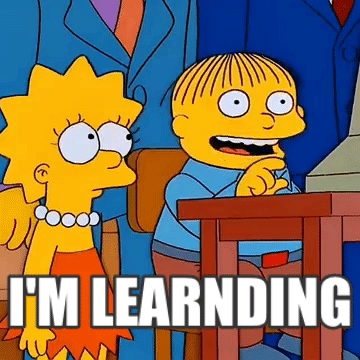Don't wanna be here? Send us removal request.
Text
Final Blog Post!! (#3 for UOAC2)
Alright, alright, alright! We are BACK after an exceptional semester with Prof. Pierre Lévy, it is TIME for my final blog post/ reflection. Just to quickly refresh your memory (or in case you are new here) this is for the class CMN 3509A: Théories avancées en communication where we have taken a look at a multitude of different theories in communications that can really be applied to our everyday lives.

Now, because the topics that we covered in class would be way too much to cram all into one post, I am going to narrow in on one subject that I found particularly interesting and that really did change my view a little for moving forward. The topic that really got my interest this semester was rhetoric. And yes, you might be thinking: “isn’t that exactly what you talked about last time???”. The answer is: yes, I did discuss rhetoric in my last reflection. However, in that entry I focused on what I learned and really just did an overview of very basic points on the topic. This time is different. This time we are talking about real life applications. How did learning about rhetoric change my perspective on communications? How do I plan to use it moving forward? Do a bunch of dead white guys actually have good points now and again? All these questions and more will be answered if you just stick with me, kids.

One of the major things we learned about rhetoric was the link between communication and action (or power). Intention was the first element in the subject, it has to do with the planning of a symbolic action, using logos ethos and pathos. Logos ethos and pathos are the three dimensions of the persuasive strategy. Logos has to do with the manipulation of the story and it is all about telling a credible story so it is mainly focused on reasoning. Ethos however, is all about manipulating the image and basically just making the speaker seem most trustworthy. And finally, pathos is all about connecting with feeling or manipulating emotions in order to persuade. This has helped me to recognize these elements in texts that I read to understand how they may persuade or manipulate me. It also gives me a good base of things to think about when I am trying to write a persuasive text or speech. I am grateful to have learned this theory and specifically these elements (and specifically the persuasive strategy) so that I may improve my writing for future endeavors. The next important element to note when talking about communication and action is message construction. Message construction is all about making your ideas memorable. It uses ideas, planning, styles, memory, and action to portray ideas in a way that sticks. The “coup” is about linguistic code or “locution”, social conventions (“illocution”), and real social effects (“perlocution”). it also involves different kinds of success. Finally, the last Element in this topic is the game it has to do it’s the creation of Different symbolic forms. Additionally, language is used as a tool for a variety of different subjects and genres. Once again it is important to note how rhetoric can be used in action. This is extremely important when attempting to integrate these methods into our daily lives. These particular concepts concepts can be used for pretty much anything. We can use them to create speeches, to just talk, to write, and to analyze. I hope that now I will take these methods into account when doing these types of things to make my way of presenting my ideas more engaging, convincing, and trustworthy.

The last thing I will talk about in this blog post are the five Steps in creating a persuasive speech. These steps include the following: Invention, arrangement, style, memory, and execution. Invention is the very beginning of creating a persuasive speech in the step you need to find the right ideas or contacts to develop a strategy in which to base your speech off of in this case you would start with brainstorming (also known as just a listing of different ideas to come up with the one you will eventually go with). The next step is planning which Consists of creating logical steps or narrative for the main idea. The third step, style, adapts a context and strategy to give off a particular vibe. Afterwards, memory techniques are taken into account (memory step), that often provide visual representations. Finally, execution is the last step in creating a persuasive speech, Involving the particular attitude, tone of voice, staging, and body language that the presenter gives off which leaves a very large impression on the audience and helps to determine whether or not the speech is truly persuasive. This theory, is of course very useful for moving forward, as public speaking will no doubt be a part of my future academic career at some point and knowing which elements to include in order to develop a persuasive speech will most certainly come in handy.

All in all, it has been a great semester and \i am very thankful for all of the theories presented. Of course, I will take much more into account as I move forward than just what I discussed in this post. Thank you for reading, its been real!
5 notes
·
View notes
Text
Blog Post #2 (UOAC2)
Welcome back! As mentioned in my previous blog post, I’m taking CMN 3509A: Théories avancées en communication with Professor Pierre Lévy. Throughout the semester, we have taken look at a variety of different theories in media. Just like last time, we’re gonna take a quick look at one of my favourite topics that we have covered so far this semester.

In this entry, we’re going to be talking about rhetoric. I found this topic extremely interesting. Just to recap, the word rhetoric refers to persuasive language (usually in speeches or writing). As we saw in class, rhetoric largely about communication and action, made up of: Intention, message construction, "coup", and the game.

A particular part of what I found most interesting about the topic of rhetoric is the persuasive strategy and its three dimensions. The three dimensions include: Logos, Ethos, and Pathos.

Let’s begin with Logos. Logos is about appealing to one’s logic. Forget about that bass, its all about that reasoning. Logos comes from common places, uses probable reasoning, is used to tell a credible story, and for the manipulation of the story.

Ethos focuses on ethics and is more about asserting a sense of authority and credibility to make the audience feel like the speaker is a reliable source. In this strategy, one will attempt to create an identification of the author or speaker, establish a sense of trust, give a personal testimony/ speak from their own experience, and ultimately manipulate the image to give off a more credible aura.

Finally, pathos is focused around emotion and creating an emotional tie with the audience. This strategy makes use of the whole field of emotion, determines the strength of the persuasive effect, and ultimately manipulates emotions.

Alright folks! That’s all for now! Till next time, check out my Twitter moment: https://twitter.com/i/moments/1066820834717626369

0 notes
Text
Blog Entry #1 (UOAC2)
This semester, I have taken CMN3509 A: Théorie Avancée en Communication with Professor Pierre Lévy. Through the lectures, readings, and tweets from my classmates so far, I have learned about a variety of different topics relating to theories in communication. Specifically, we have discussed Grammar, Dialect, and Signs.

Personally, I have found the subject of signs most interesting. I enjoy learning about the elements of signs, symbols, and language. I have learned that signs can be almost anything as long as they contain a message/meaning for the receiver. I have learned that even this is up to interpretation by the individual. Additionally, meaning is made up of a certain sign meaning something to a particular person. Again, signs can be almost anything. They can take the form of icons, images, conventional signs like symbols, the list goes on.

Symbols are like signs but split into two parts. In this case, the parts are called “the signifier” and “the signified”, meaning that there is the element that signifies a certain meaning. Both signs and symbols act as a code for the people who understand them and can have different meanings for different groups of people.

We also create meaning through language and its many elements, it goes beyond words as language is how we communicate and transfer knowledge. This can include the variety of languages humans have developed (such as English, French, Arabic..etc.), as well as non verbal language like body language and facial expressions.

In conclusion, I have greatly enjoyed the class so far and look forward to the new concepts and theories we will discuss in the next part of the semester!
Check out my Twitter moment at https://twitter.com/i/moments/1056902055946866688 to get a better idea of the topics discussed in this post.
That’s all for now, see you in my next blog entry!

1 note
·
View note